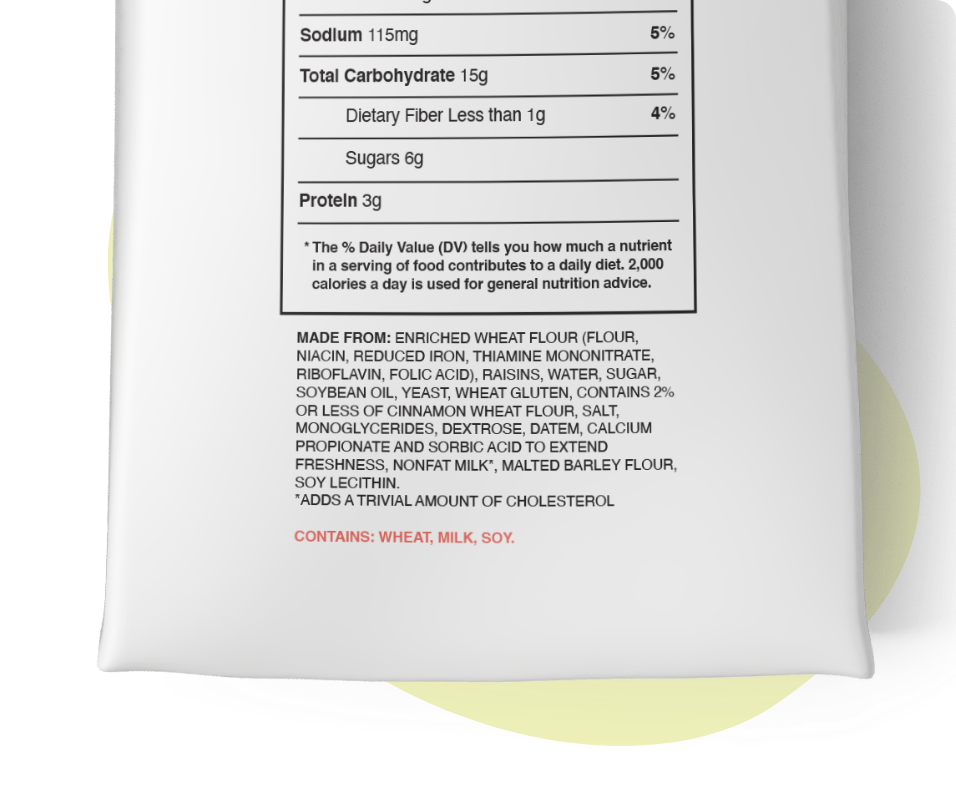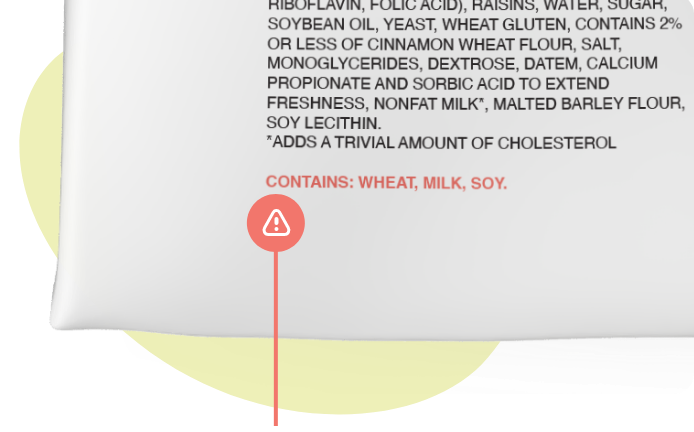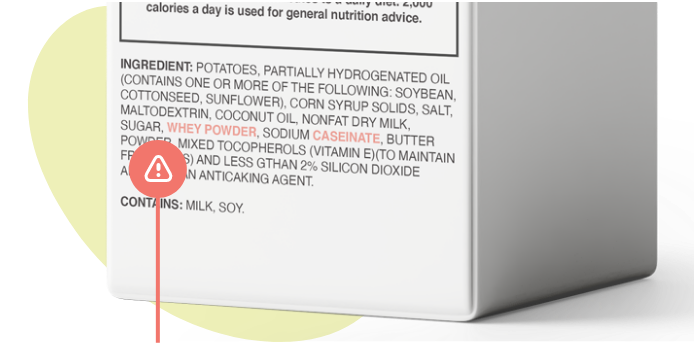This website uses cookies to help us give you the best experience when you visit and for certain analytics and marketing activities. By continuing to use this website, you consent to the use of these cookies. Please exit the website if you do not agree to such cookies being used. To find out more about how we use cookies, go to our Privacy Policy.
Galactosemia diet
Learning about
a Galactosemia-
friendly diet
Endogenous Galactose
Everyone makes galactose, whether or not they have Galactosemia
Galactose has two different sources:
External sources/food:
- Galactose you expect in food due to its lactose content, such as milk and dairy products
- Galactose you don't expect in foods, such as certain fruits and vegetables
People with Classic Galactosemia are missing an enzyme that is needed to correctly process galactose.
Galactose leads to the creation of toxic galactitol. Following a Galactosemia-friendly diet can reduce the amount of galactose in your body.

Internal sources/your body:
- Endogenous galactose, which is made naturally in the body

People with Classic Galactosemia are missing an enzyme that is needed to correctly process galactose.
Galactose leads to the creation of toxic galactitol. Following a Galactosemia-friendly diet can reduce the amount of galactose in your body.

Galactose exposure—either from diet or produced naturally by the body—leads to production of toxic galactitol and is thought to contribute to long-term complications. This is why dietary restrictions are so critical after a diagnosis of Classic Galactosemia.
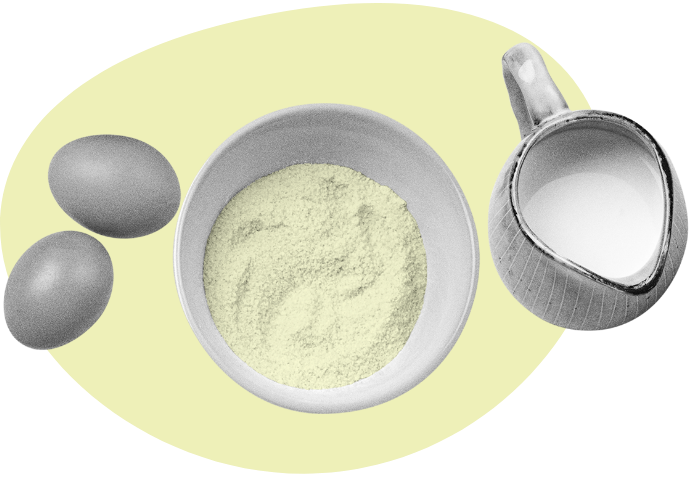
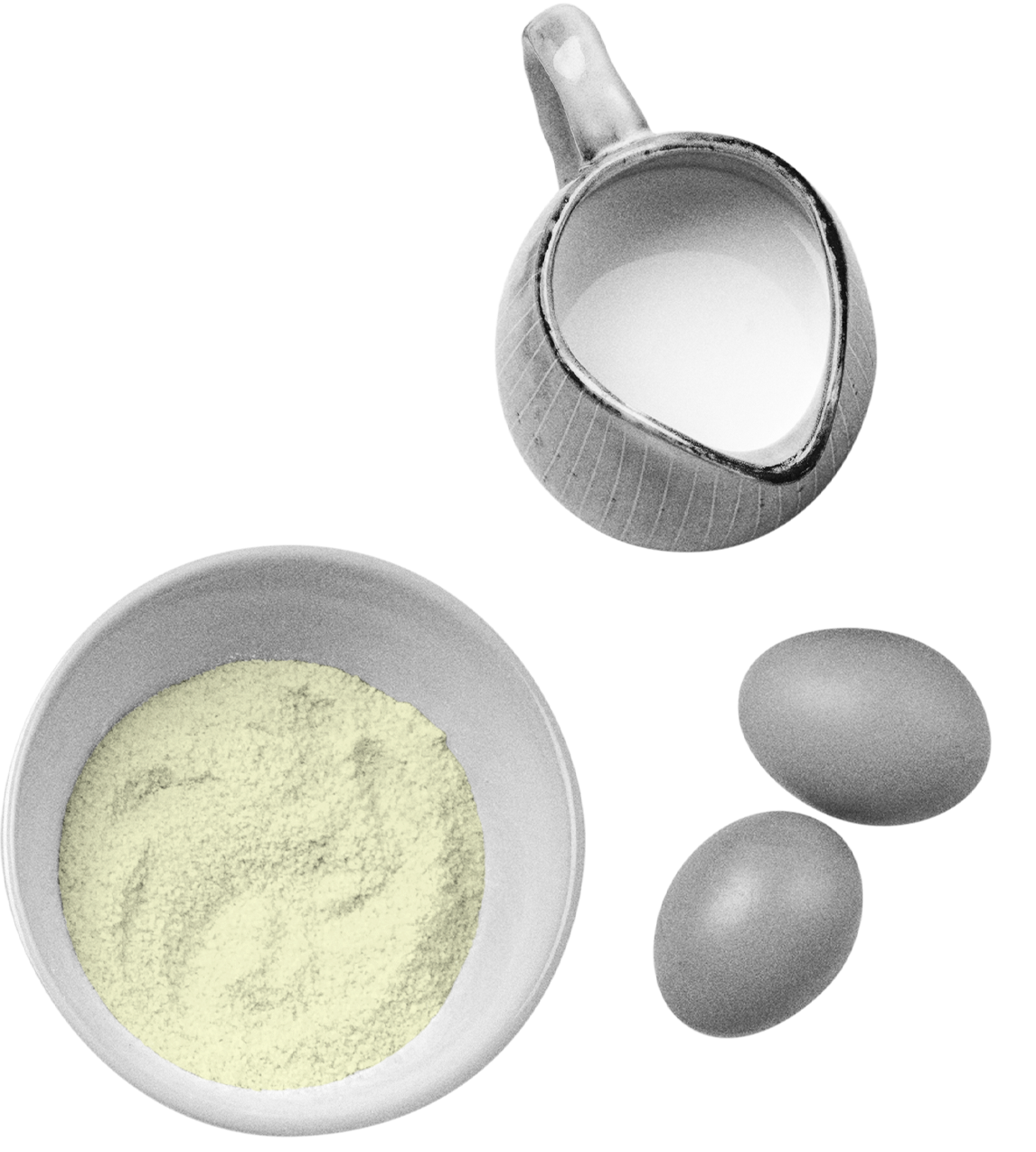
So how can you make meal planning easier on a Galactosemia diet?
Plan and make foods that the adults in the family enjoy. Most parents know that if you only cook what the kids love to eat, your meals may start looking like only pasta and chicken. Broadening the family menu can help the youngest family members learn to enjoy a variety of foods.
Offer new foods along with the ones the family knows and loves. Exposure to new food paired with the comfort of familiar foods can make it easier for your child to try new foods.
No matter the age, family members can be a little leery of new foods. Offer different types of new foods when you can, which can make it more likely for your family to give new foods a try.
Kids are masters at spotting coercion. Offer up new foods as neutrally as possible. A simple "this is what we're having for dinner" can help.
Good for children and adults alike, having set times to make sure everyone in the family is nourishing themselves can help young children manage their overall nutrition throughout the day. This can help older family members remember to take a break and refuel.
-
Experiment with foods
Offer new foods along with the ones the family knows and loves. Exposure to new food paired with the comfort of familiar foods can make it easier for your child to try new foods.
-
Keep at it
No matter the age, family members can be a little leery of new foods. Offer different types of new foods when you can, which can make it more likely for your family to give new foods a try.
-
Keep it simple
Kids are masters at spotting coercion. Offer up new foods as neutrally as possible. A simple "this is what we're having for dinner" can help.
-
Create a routine
Good for children and adults alike, having set times to make sure everyone in the family is nourishing themselves can help young children manage their overall nutrition throughout the day. This can help older family members remember to take a break and refuel.
Sit down together
In general, children who are able to eat a meal with their family have higher diet quality and do better in school.

Testimonials
Living with Galactosemia


Know your ingredients
Staying clear of lactose
One common source of galactose is foods that contain lactose. Additionally, there are other nondairy foods that contain galactose.
Everyone with Galactosemia is different, including their dietary requirements and restrictions. In order for you to make informed healthcare decisions, you should always consult with your physician for your personal medical needs. You may consider consulting with a metabolic dietitian who specializes in genetic metabolic disorders and can provide guidance on maintaining a Galactosemia-friendly diet.
Product labels are almost always your best source for checking ingredients. The same food product can change formulas over time, so it's important to re-read food labels every time.
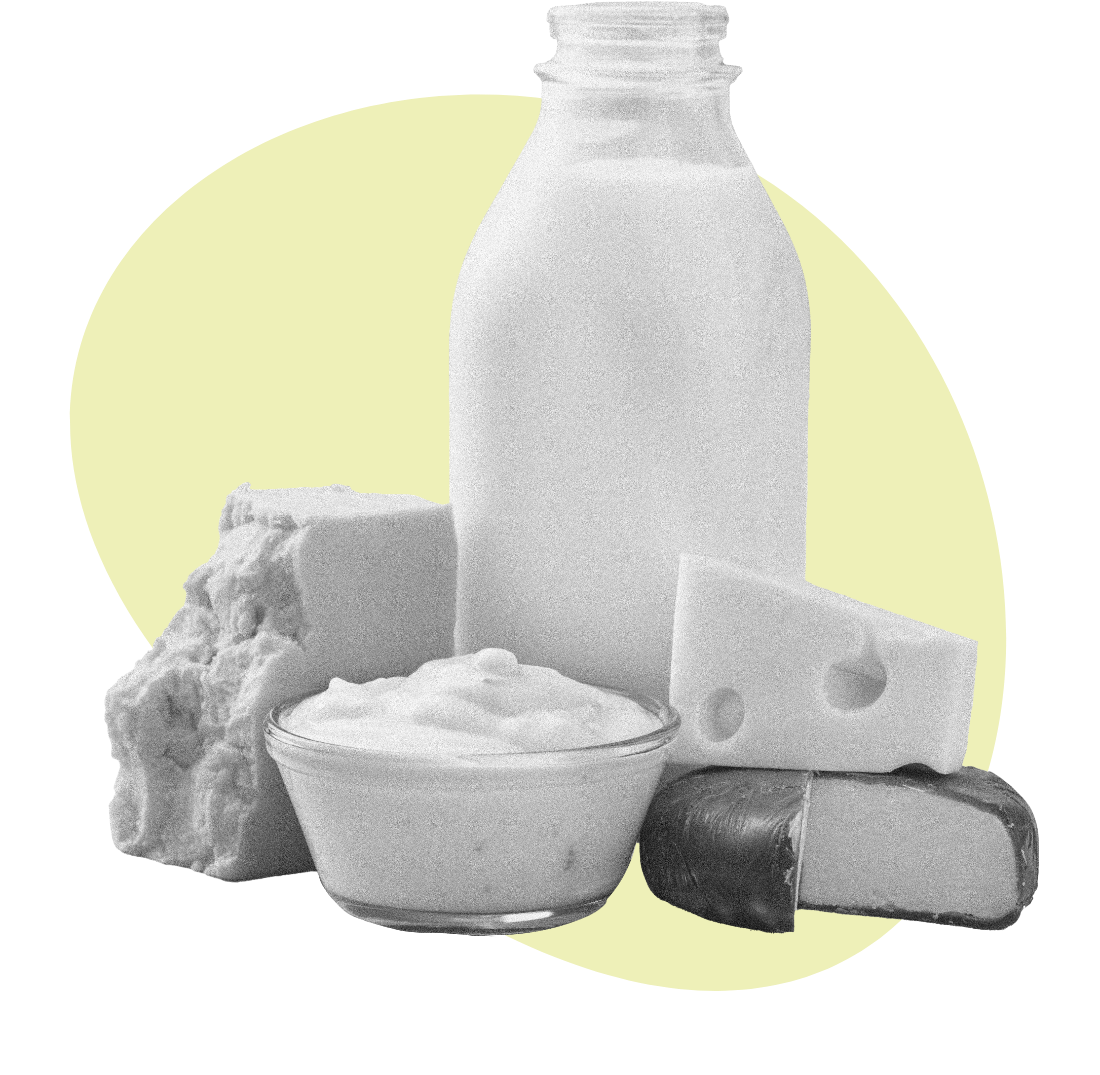
Lactose is the biggest source of galactose
Any product containing lactose will be digested into galactose (as well as other sugars) in your body. Lactose is most commonly found in dairy products derived from milk; however, there are other less obvious sources of lactose, such as artificial sweeteners and certain prescription medications that contain lactose as fillers. And be aware that products labeled "lactose-free" can still contain galactose.
- Butter*
- Buttermilk
- Buttermilk solids
- Cheese (Exceptions: Certain hard cheeses and cheeses aged more than 10 months can be typically very low in lactose. Content varies by style and source.)
- Cream
- Ice cream
- Sherbet
- Sour cream
- Yogurt
- Milk
- Milk chocolate
- Milk solids
- Milk derivatives
- Dry milk
- Dry milk protein
- Dry milk solids
- Nonfat milk
- Nonfat dry milk
- Nonfat dry milk solids
- Hydrolyzed whey
- Lactoglobulin
- Lactostearin
- Whey and whey solids
*Ghee, which is clarified butter, is generally considered to be lactose-free, though some may contain small amounts of lactose.
The following ingredients come from milk but do not contain lactose:
- Casein
- Lactalbumin
- Lactate
- Lactic acid
"Lactose-free"
- The usage of this term is currently not regulated by law. A product containing less than 0.1 g of lactose per 100 g may be called "lactose-free." Additionally, lactose-free products may still contain galactose.
- Margarine*
- Processed lunch meats (other than kosher)
- Organ meats (such as liver)
- Frozen or instant potato foods (may contain milk)
- Salad dressings
- Breads (some), naan, croissants, muffins, pancakes, waffles
- Chicken nuggets (batter coating)
- Batter coatings on meat or vegetables
- Gravies
- Cheese-flavored crackers
- Toffee, butterscotch, caramel, fudge
- Powdered coffee creamers, and some whipped toppings
*Many margarines contain lactose. A few diet margarines do not contain milk. Check labels before using any brand. If "margarine" is listed as an ingredient in any processed food, you should find a substitute.
Lactose is present in about 20% of prescription medications and some over-the-counter items, such as:
- Some artificial sweeteners
- Antacids
- Oral contraceptives
- Other medications
As always, it's important to consult with your metabolic geneticist or dietitian for your personal dietary needs.
Stay in the loop and get updates
Connect with Galactosemia Together:
References
- Abbott Laboratories. Understanding Galactosemia: a diet guide. 2010.
- Acosta PB, Gross KC. Hidden sources of galactose in the environment. Eur J Pediatr. 1995;154(7 suppl 2):S87-S92. doi: 10.1007/BF02143811
- Berry GT. Classic galactosemia and clinical variant galactosemia. In: Adam MP, Ardinger HH, Pagon RA, et al, eds. GeneReviews®. Seattle (WA): University of Washington; February 4, 2000.
- Coelho AI, Rubio-Gozalbo ME, Vicente JB, Rivera I. Sweet and sour: an updated on classic galactosemia. J Inherit Metab Dis. 2017;40:325-342. doi:10.1007/s10545-017-0029-3
- Diet Resources. Galactosemia Foundation. Accessed June 30, 2021. http://www.galactosemia.org/diet-resources
- Food allergies: what you need to know. FDA. Updated March 2017. Accessed September 30, 2020. https://www.fda.gov/food/buy-store-serve-safe-food/what-you-need-know-about-food-allergies
- Food and Diet. Australia Galactosemia Support Network. Accessed October 29, 2020. http://www.agsn.org.au/food-and-diet/
- Galactosaemia. National Centre for Inherited Metabolic Disorders. Updated October 2019. Accessed October 29, 2020. http://metabolic.ie/wp-content/uploads/2019/08/Galactosaemia-Booklet.pdf
- Herman JM. Montessori Life: the importance of family meals. Accessed October 1, 2020. https://amshq.org/Families/Reading-Material
- Lactose-free diet. University of Rochester/Golisano Children’s Hospital. Accessed June 30, 2021. https://www.urmc.rochester.edu/childrens-hospital/nutrition/lactose-free.aspx
- Lactose intolerance. Cleveland Clinic. Accessed June 30, 2021. https://my.clevelandclinic.org/health/diseases/7317-lactose-intolerance
- Lactose intolerance: Shopping tips for lactose-intolerant people. Institute for Quality and Efficiency in Health Care (IQWiG). September 15, 2010. Updated November 29, 2018. Accessed June 30, 2021. https://www.ncbi.nlm.nih.gov/books/NBK310258/
- National Center on Addiction and Substance Abuse, Columbia University. CASAColumbia™ White Paper: the importance of family dinners VIII. Updated September, 2012. Accessed October 21, 2020. Available from: https://www.fmi.org/docs/default-source/familymeals/2012924familydinnersviii.pdf?sfvrsn=967c676e_2
- Portnoi PA, MacDonald A. The lactose and galactose content of milk fats and suitability for galactosaemia. Mol Gen and Metab Rep. 2015;(5)42-45. doi: 10.1016/j.ymgmr.2015.10.001
- Problems digesting dairy products? FDA. Accessed June 30, 2021. https://www.fda.gov/consumers/consumer-updates/problems-digesting-dairy-products
- Rubio-Gozalbo ME, Haskovic M, Bosch AM, et al. The natural history of classic galactosemia: lessons from the GalNet registry. Orphanet J Rare Dis. 2019;14(1):86. doi:10.1186/s13023-019-1047-z
- Thompson S. Dietary management of galactosemia. ASEIM. Accessed October 15, 2020. https://www.hgsa.org.au/documents/item/217
- Welling L, Bernstein LE, Berry GT, et al. International clinical guideline for the management of classical galactosemia: diagnosis, treatment, and follow-up. J Inherit Metab Dis. 2017;40(2):171-176. doi:10.1007/s10545-016-9990-5
- Why the family meal is important. Stanford Children’s Health. Accessed October 21, 2020. https://www.stanfordchildrens.org/en/topic/default?id=why-the-family-meal-is-important-1-701

